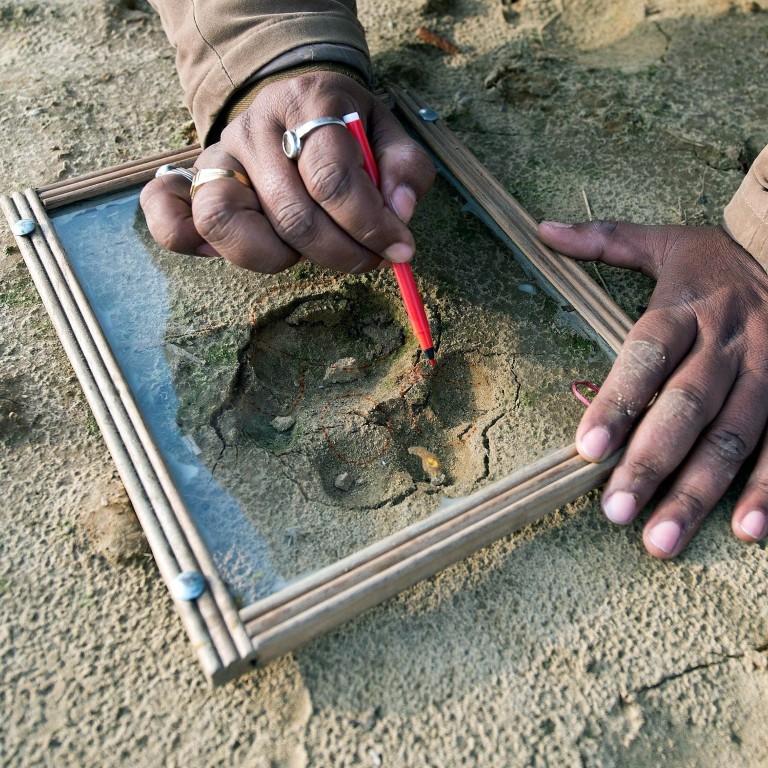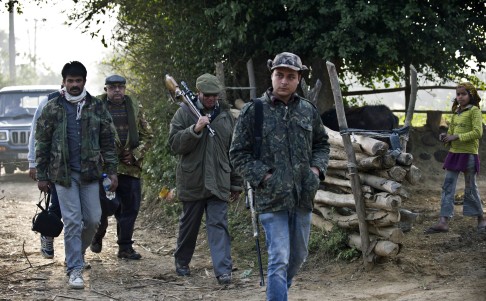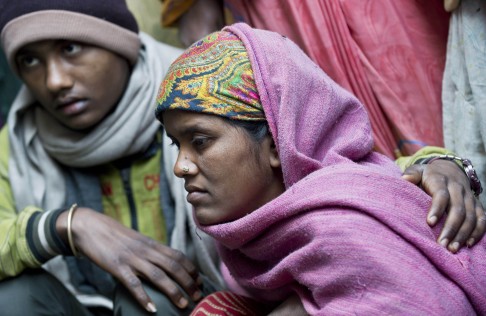
Video | In India, the hunt is on for man-eating tiger that killed eight people
Though tiger hunting is illegal in Uttarakhand, a group of hunters are licenced to capture or kill their prey
As he trains his .458 Winchester Magnum rifle on a tethered goat he is using as bait, tiger-hunter Nawab Shafat Ali Khan whispers that it is only a matter of time before his real prey reappears.
“Now is a very dangerous time. The next human attack could happen anytime,” said the 55-year-old, who is leading a major tiger hunt on the outskirts of India’s Jim Corbett National Park.
“This particular man-eater is hungry. It’s been a week since its last human kill.”
Since December 29, the same tiger is believed to have killed eight people living near the national park which covers 521 square kilometres in the northern states of Uttar Pradesh and Uttarakhand.
The spree has terrorised villagers and prompted officials to call on Khan to stop the toll rising further.
While tiger-hunting is illegal in Uttarakhand, the Uttar Pradesh state government has licenced Khan and five other hunters to either capture or kill their prey.
This particular man-eater is hungry. It’s been a week since its last human kill
India is home to half the world’s dwindling tiger population which now stands at 3,000. Although attacks are rare, a loss of their natural habitat has brought man and beast into closer proximity.
Some 200 tigers live in Jim Corbett Park but locals say this is the first time they can remember one of them attacking villagers.
Watch: Gunning for the big cat

Speaking on Sunday from inside a stakeout hut that he has built in the middle of an open field, Khan said his team was firmly on the tiger’s trail.
“This is where a tiger left its footprints late on Saturday evening,” he said.
Khan got the call from the authorities in Uttar Pradesh last month while he was on another hunt in the southern state of Tamil Nadu. That tiger was subsequently shot dead.
The hunters employ a variety of tricks to lure their prey, including traps and the goat bait. Forest officials even ride on elephants to follow its trail through the dense forest, armed with tranquiliser guns.
It is for the first time ever that we have become conscious of the fact we have so many tigers close to us in the forest
The villagers are desperate for a quick result.
Anand Saini, whose brother Devendra was the tiger’s most recent victim on January 26, said everyone was living in fear.
“It is for the first time ever that we have become conscious of the fact we have so many tigers close to us in the forest,” he said from his home in the district of Bijnor. “The children in the village are now being asked not to venture too far out, particularly early in the morning or after sunset.
“Even the farmers who used to sleep in the fields to prevent animals like deer or [chital] from destroying their crops are staying home at night.”
Devendra was dragged to his death while erecting a fence around his farm.
“It all happened so fast, we didn’t even realise what had happened,” said his 16-year-old son Krishna. “When we looked in his direction he wasn’t there.”

A search party soon came across his bloodied jacket before finding his body some 200 metres inside the forest that surrounds the village. His stomach and parts of his thigh were missing while there was a cluster of pugmarks around his body.
Rohtash Saini (no relation), who lives in a neighbouring village, said it was the first time residents there had been attacked.
“There have been instances of them taking away our cattle but this has really shocked us,” he said. “We’ve stopped venturing too far out and hope the government catches it as quickly as possible.”
Half a century ago, India was home to around 40,000 tigers. Development and poaching have contributed to cutting numbers to around 1,700.
[They are] not always trying to kill people, but when a tiger is surrounded by people conflict is inevitable
In Jim Corbett Park, the population has stabilised but the success of the conservation efforts has had a knock-on effect.
“As your tiger numbers within parks increase, they have nowhere else to go, they need to disperse out,” said Joseph Vattakaven, tigers coordinator at the WWF-India wildlife group.
“As the tiger tries to traverse the territory, they will come into conflict with people – not always trying to kill people, but when a tiger is surrounded by people conflict is inevitable.”
Even though there are around 200 tigers in the park, forestry officials say the pugmarks indicate a single animal is behind all the deaths.
Kamlesh Kumar, a ranger in a forested area of Uttar Pradesh where three people have died, said the killer was female and around three years old.
Kumar said the ban on hunting in Uttarakhand and the need to ensure the right tiger is made for “a tense and complicated situation”.
“It is possible that there is more than one tiger moving across our area so we have to clearly identify the killer,” he said.
